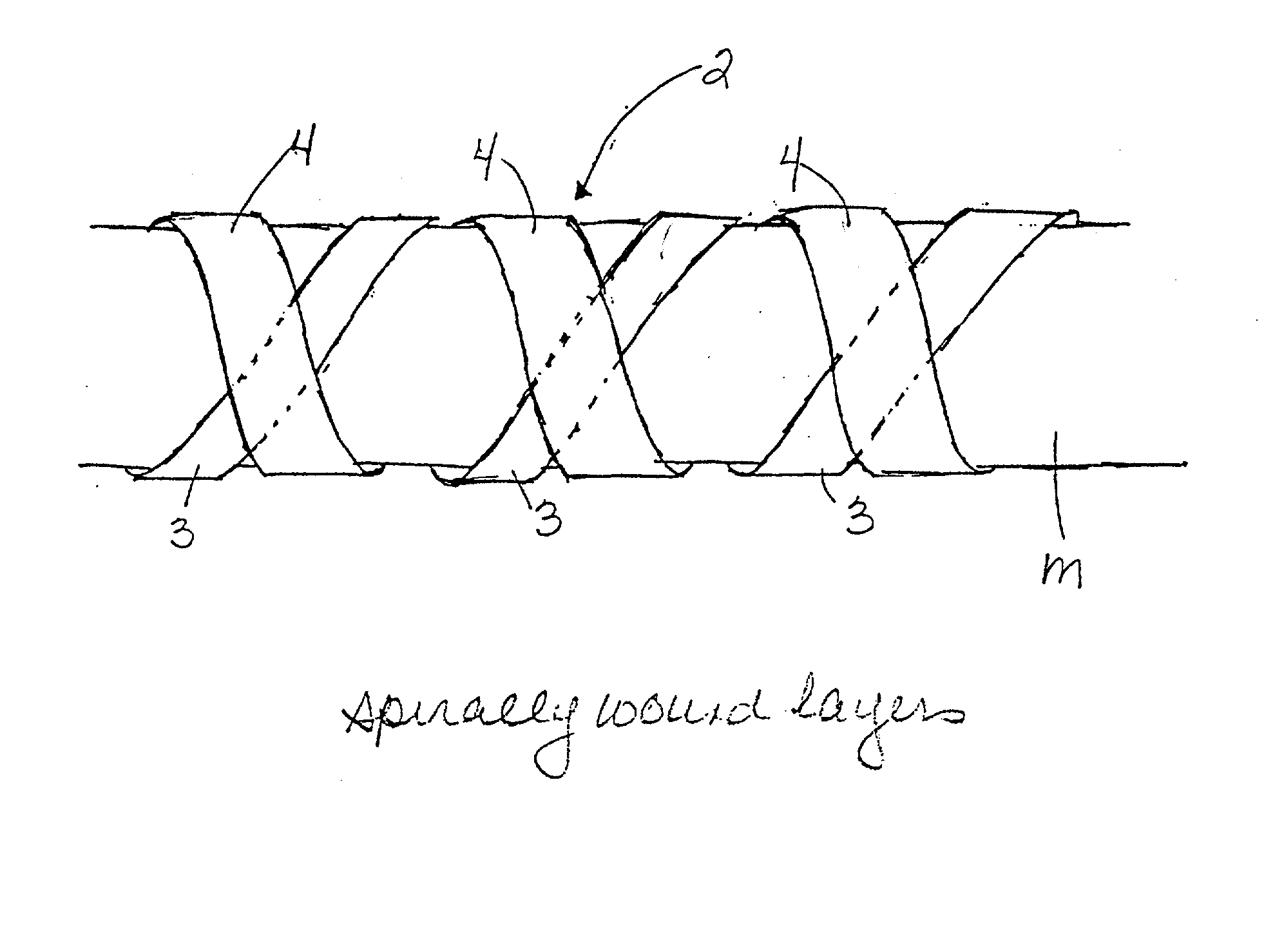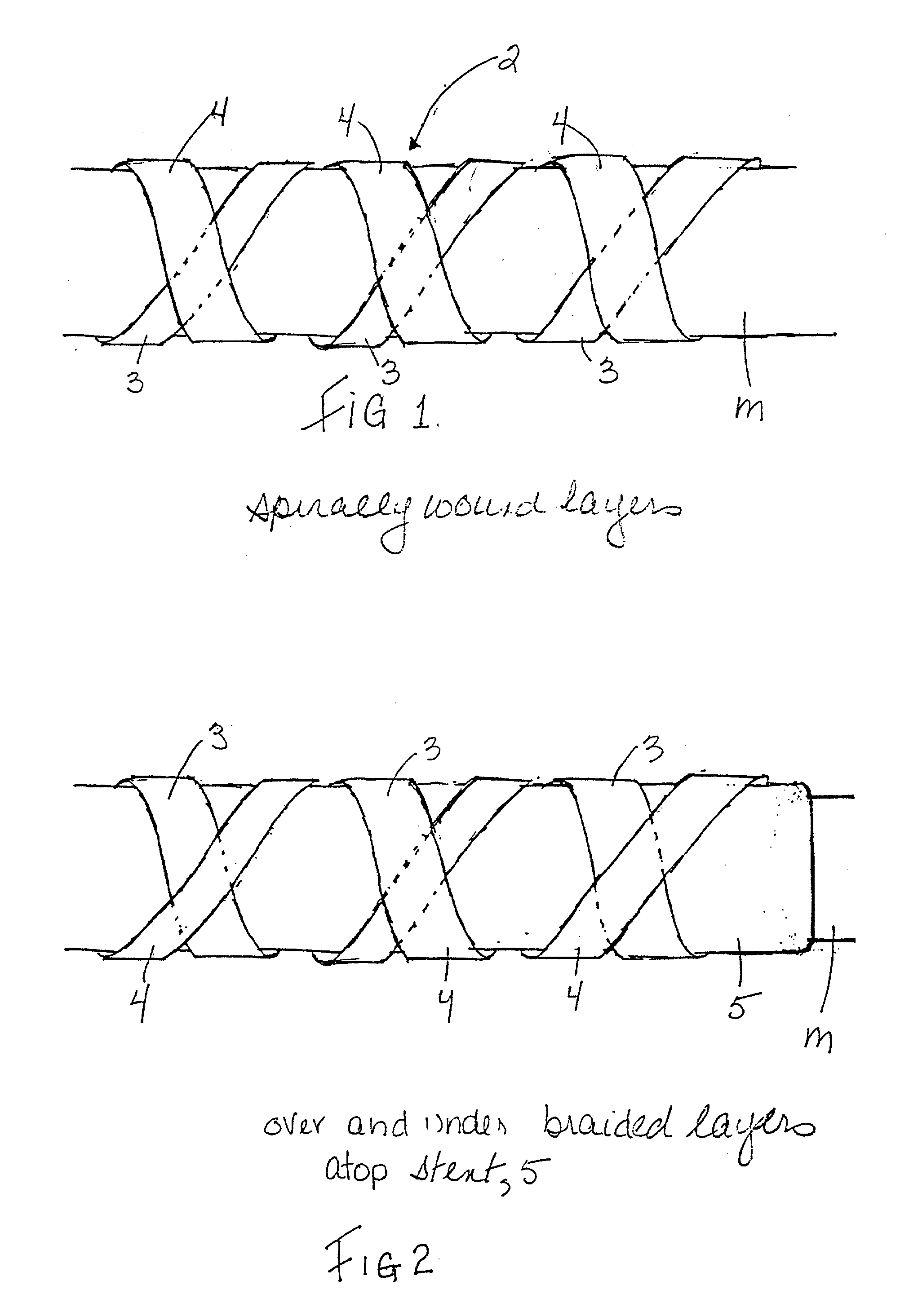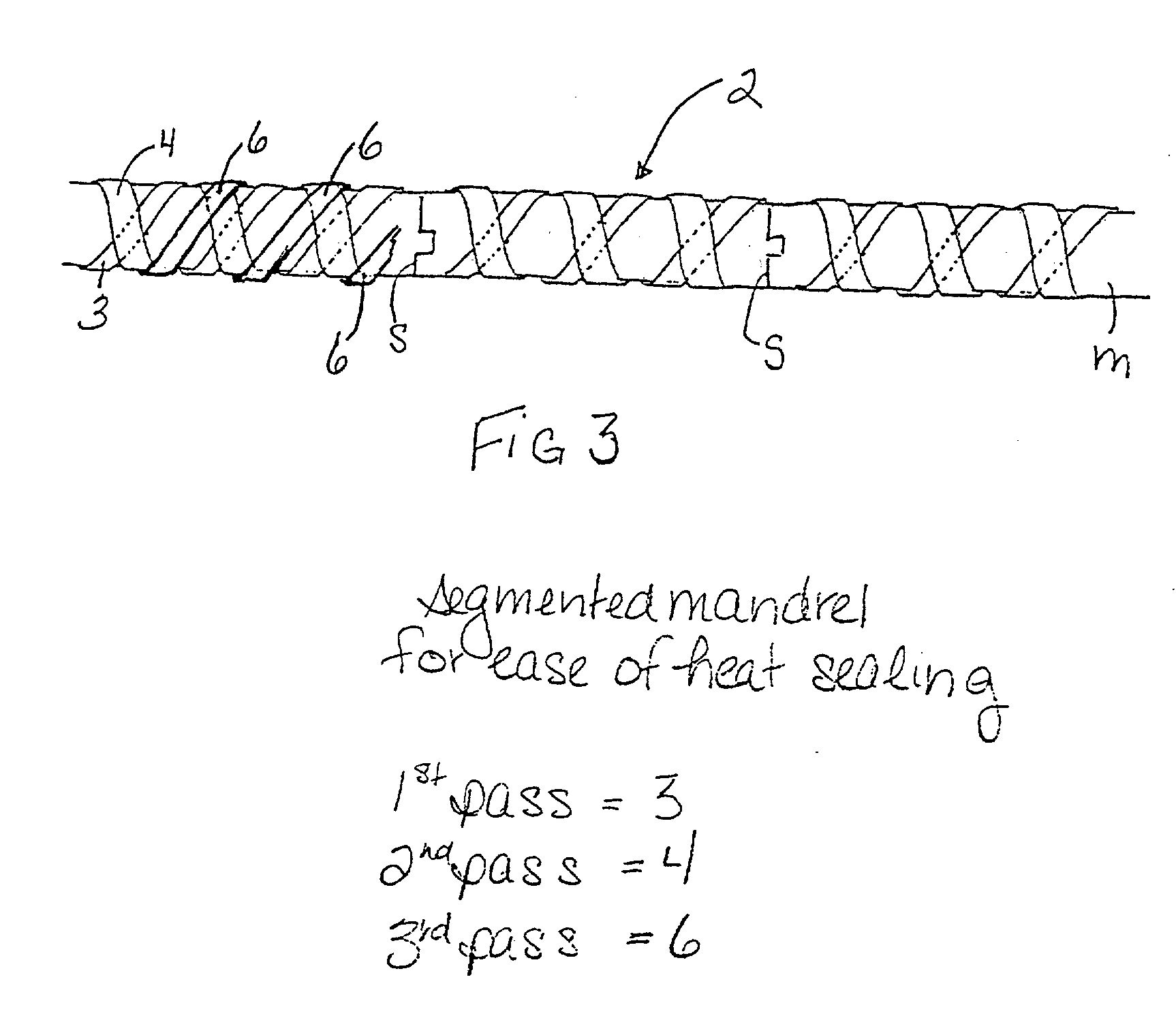Seamless braided or spun stent cover
a stent cover and seamless technology, applied in the field of intraluminal prosthesis, can solve the problems of reduced flexibility, minimal radial compliance, and eptfe-containing tubes, and achieve the effects of increasing axial and radial compliance, flexibility, and reducing rigidity
- Summary
- Abstract
- Description
- Claims
- Application Information
AI Technical Summary
Benefits of technology
Problems solved by technology
Method used
Image
Examples
Embodiment Construction
:
[0021] The prosthesis of the preferred embodiment of the present invention is a composite implantable intraluminal prosthesis which is particularly suited for use as a vascular graft. The composite prosthesis of the present invention includes a graft structure with circumferentially distensible support structure and a noncontinuous layer of wound PTFE components. Desirably, the composite may also include a continuous ePTFE layer, with the circumferentially distensible support structure interposed between these PTFE layers. The present description is meant to describe the preferred embodiments, and is not meant to limit the invention in any way.
[0022] Shown in FIG. 1 is a longitudinally discontinuous tubular PTFE body, shown generally at 2, which forms one of the layers of the composite. The tubular body is formed by wrapping at least two PTFE components, such as strips 3, 4, in opposed spirals, about a distensible tubular support structure shown generally at 5, or directly around a...
PUM
 Login to View More
Login to View More Abstract
Description
Claims
Application Information
 Login to View More
Login to View More - Generate Ideas
- Intellectual Property
- Life Sciences
- Materials
- Tech Scout
- Unparalleled Data Quality
- Higher Quality Content
- 60% Fewer Hallucinations
Browse by: Latest US Patents, China's latest patents, Technical Efficacy Thesaurus, Application Domain, Technology Topic, Popular Technical Reports.
© 2025 PatSnap. All rights reserved.Legal|Privacy policy|Modern Slavery Act Transparency Statement|Sitemap|About US| Contact US: help@patsnap.com



